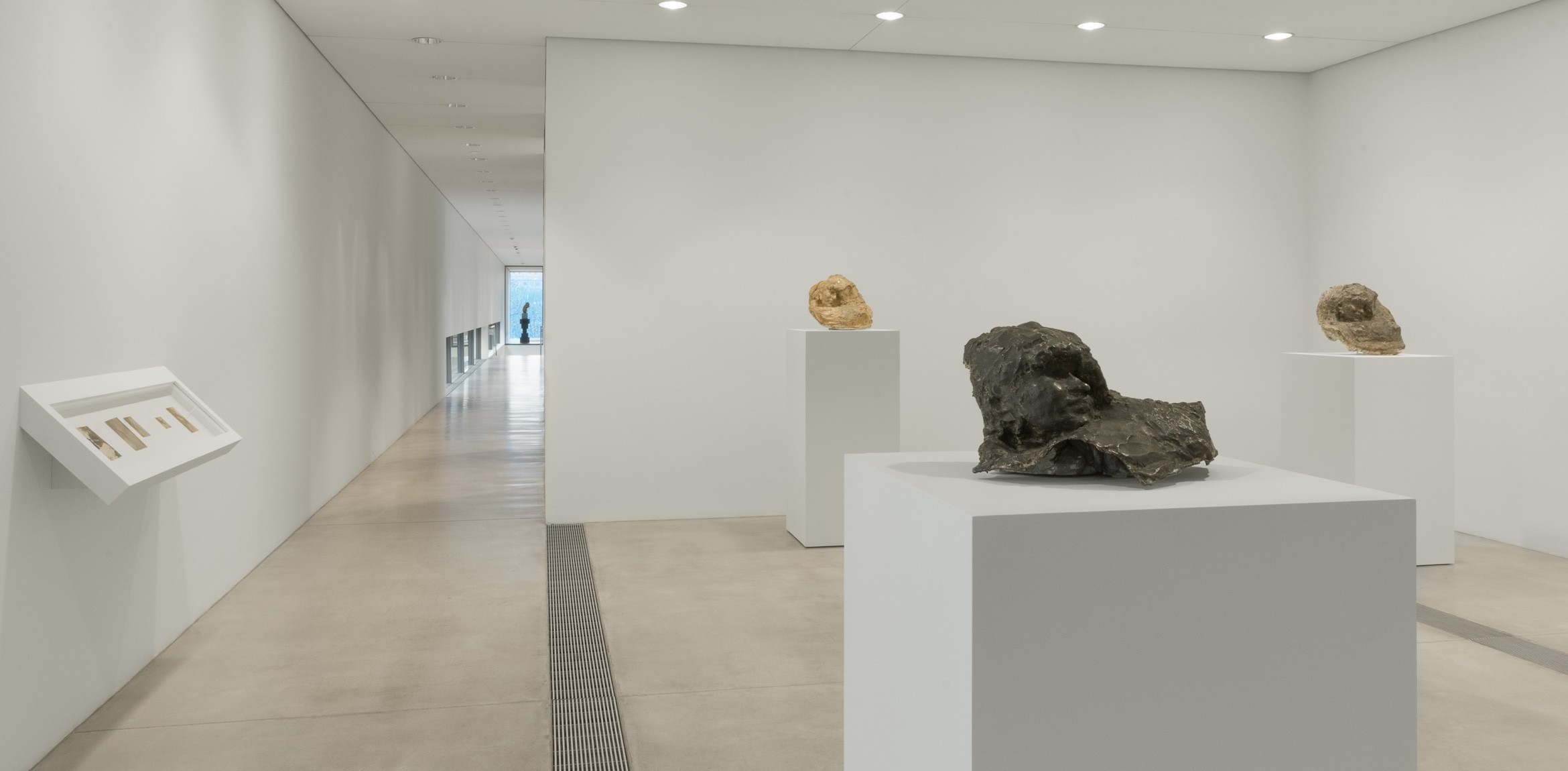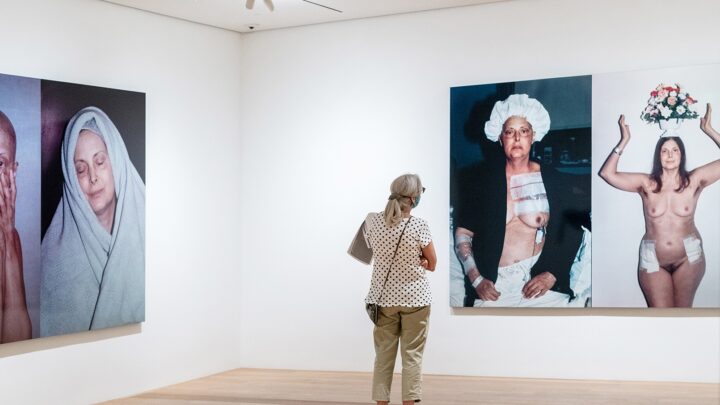This intriguing sculpture of a male figure leaning on a cane reveals Medardo Rosso’s unique approach to form. Cast in bronze, the surface has an almost molten appearance, with flowing rivulets, puddles of metal, and bubbles covering the area that surrounds the figure. Bookmaker (1893–95) also features gashes, nails, and traces of plaster—all remnants of the bronze casting process that most artists of this era would have chosen to smooth over, polish, or otherwise correct.
The bookmaker is a figure associated with gambling and street life in the late nineteenth century. In Rosso’s depiction, he is slanted at a backwards, unsteady angle. A few years later, several French critics pointed out the similarities between this unconventional pose and that of fellow sculptor Auguste Rodin’s 1898 Monument to Balzac, which is considered today to be the first modern sculpture. These critics believed that Rodin took the idea for Balzac’s unheroic posture from Rosso’s Bookmaker, and debated which of the two artists was the true founder of “Impressionist sculpture.” Rosso himself became disillusioned believing that Rodin had not acknowledged his influence, and relations broke down between two artists who had previously admired each other’s work.




